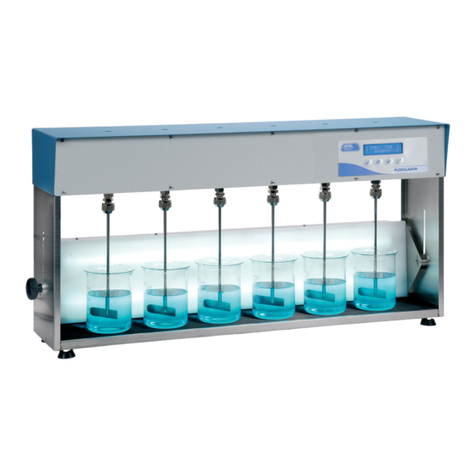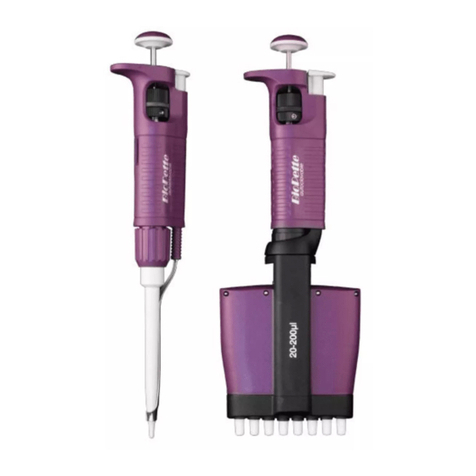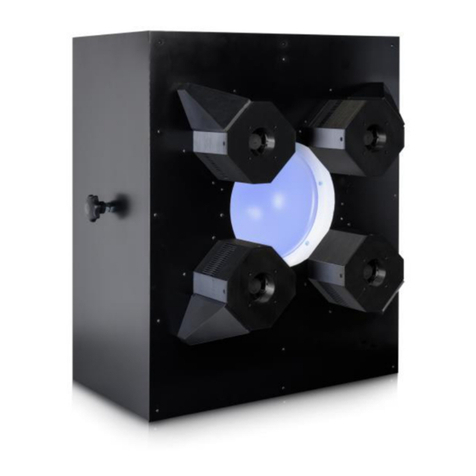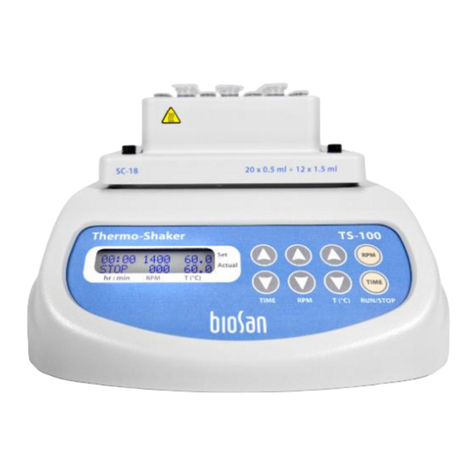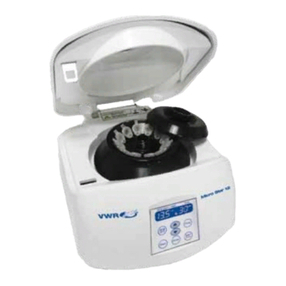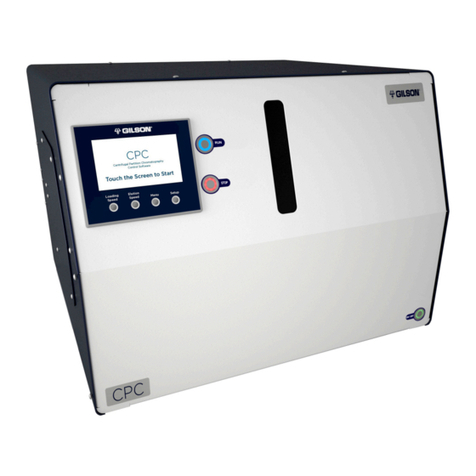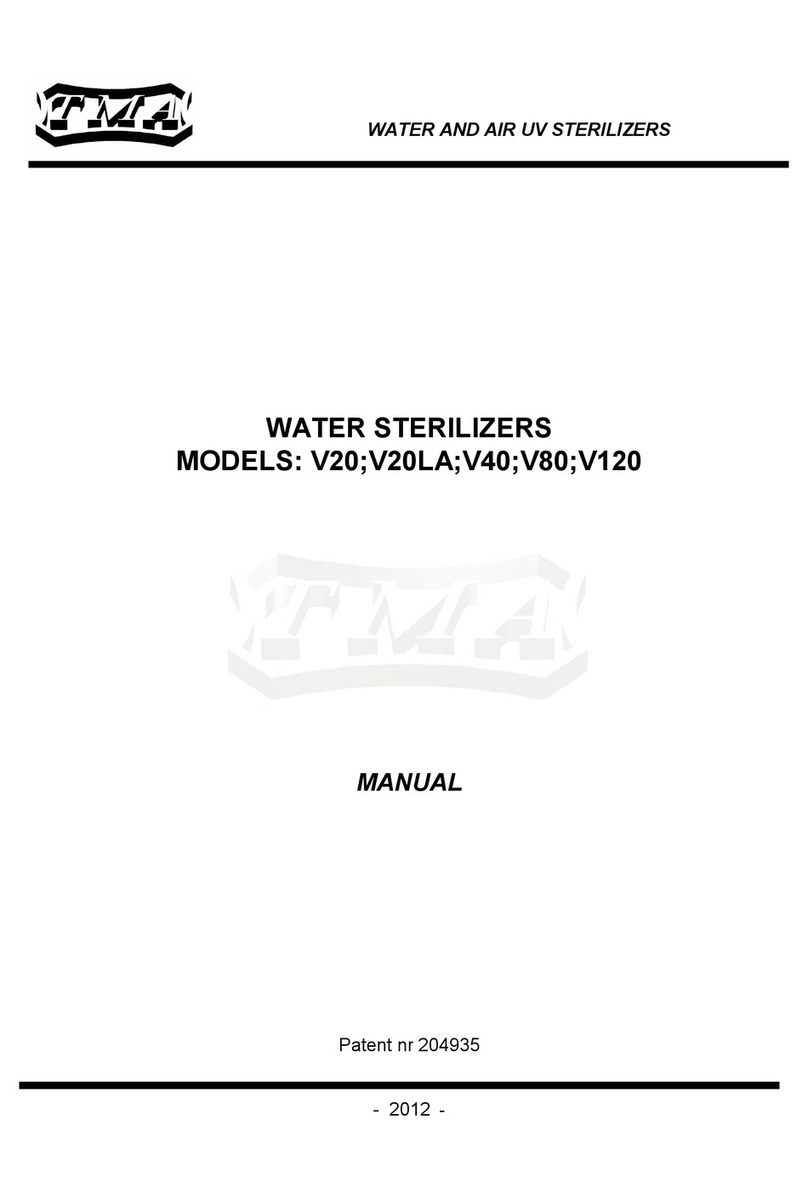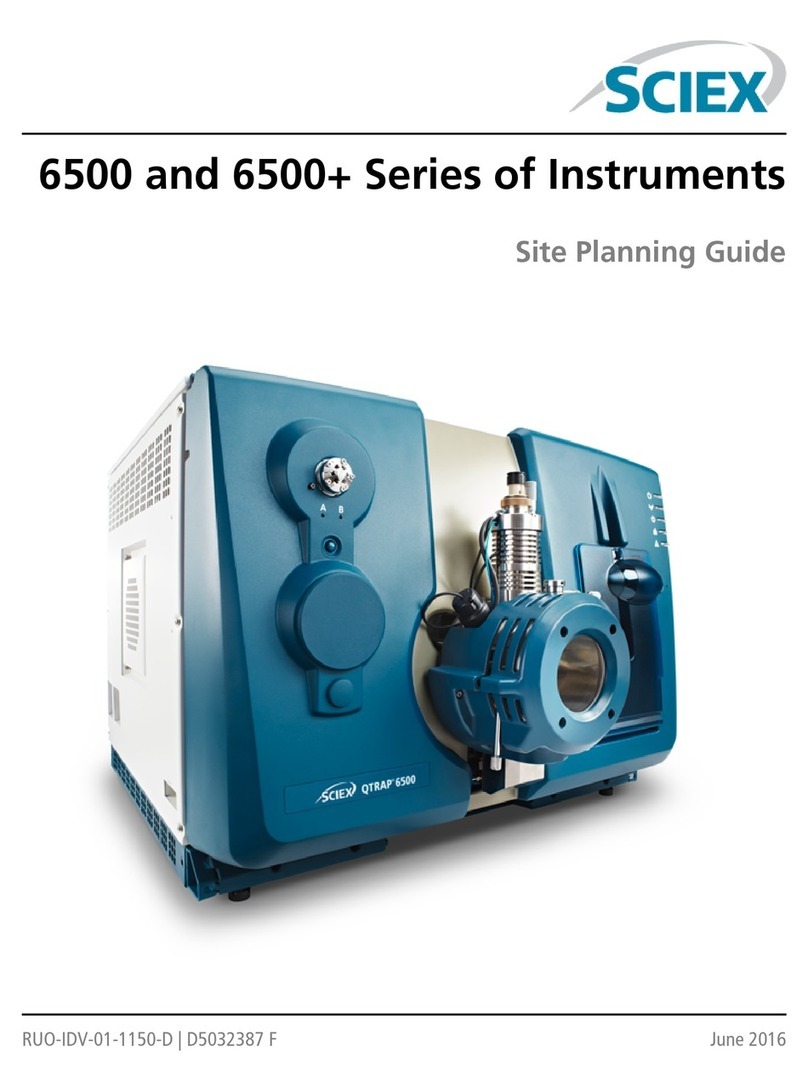Keysight Technologies N778-C Series User manual

User’s Guide
Keysight N778-C Series
Polarization Instruments
N7781C Polarization Analyzer
N7785C Synchronous Scrambler
N7786C Polarization Synthesizer
N7788C Optical Component Analyzer

Notices
© Keysight Technologies 2021
No part of this manual may be reproduced
in any form or by any means (including
electronic storage and retrieval or transla-
tion into a foreign language) without prior
agreement and written consent from
Keysight Technologies as governed by
United States and international copyright
laws.
Manual Part Number
N7780-90B02
Edition
Edition 2.0, October 2021
Keysight Technologies Deutschland GmbH
Herrenberger Strasse 130,
71034 Böblingen, Germany
Technology Licenses
The hardware and/or software described in
this document are furnished under a
license and may be used or copied only in
accordance with the terms of such license.
U.S. Government Rights
The Software is “commercial computer
software,” as defined by Federal Acquisition
Regulation (“FAR”) 2.101. Pursuant to FAR
12.212 and 27.405-3 and Department of
Defense FAR Supplement
(“DFARS”) 227.7202, the U.S. government
acquires commercial computer software
under the same terms by which the
software is customarily provided to the
public. Accordingly, Keysight provides the
Software to U.S. government customers
under its standard commercial license,
which is embodied in its End User License
Agreement (EULA), a copy of which can
be found at:
http://www.keysight.com/find/sweula.
The license set forth in the EULA represents
the exclusive authority by which the U.S.
government may use, modify, distribute, or
disclose the Software. The EULA and the
license set forth therein, does not require
or permit, among other things, that
Keysight: (1) Furnish technical information
related to commercial computer software
or commercial computer software
documentation that is not customarily
provided to the public; or (2) Relinquish to,
or otherwise provide, the government
rights in excess of these rights customarily
provided to the public to use, modify,
reproduce, release, perform, display, or
disclose commercial computer software or
commercial computer software documen-
tation. No additional government require-
ments beyond those set forth in the EULA
shall apply, except to the extent that those
terms, rights, or licenses are explicitly
required from all providers of commercial
computer software pursuant to the FAR and
the DFARS and are set forth specifically in
writing elsewhere in the EULA. Keysight
shall be under no obligation to update,
revise or otherwise modify the Software.
With respect to any technical data as
defined by FAR 2.101, pursuant to FAR
12.211 and 27.404.2 and DFARS 227.7102,
the U.S. government acquires no greater
than Limited Rights as defined in FAR
27.401 or DFAR 227.7103-5 (c), as
applicable in any technical data.
Warranty
THE MATERIAL CONTAINED IN THIS
DOCUMENT IS PROVIDED "AS IS," AND IS
SUBJECT TO BEING CHANGED, WITHOUT
NOTICE, IN FUTURE EDITIONS. FURTHER,
TO THE MAXIMUM EXTENT PERMITTED BY
APPLICABLE LAW, KEYSIGHT DISCLAIMS
ALL WARRANTIES, EITHER EXPRESS OR
IMPLIED WITH REGARD TO THIS MANUAL
AND ANY INFORMATION CONTAINED
HEREIN, INCLUDING BUT NOT LIMITED TO
THE IMPLIED WARRANTIES OF
MERCHANTABILITY AND FITNESS FOR A
PARTICULAR PURPOSE. KEYSIGHT SHALL
NOT BE LIABLE FOR ERRORS OR FOR
INCIDENTAL OR CONSEQUENTIAL
DAMAGES IN CONNECTION WITH THE
FURNISHING, USE, OR PERFORMANCE OF
THIS DOCUMENT OR ANY INFORMATION
CONTAINED HEREIN. SHOULD KEYSIGHT
AND THE USER HAVE A SEPARATE
WRITTEN AGREEMENT WITH WARRANTY
TERMS COVERING THE MATERIAL IN THIS
DOCUMENT THAT CONFLICT WITH THESE
TERMS, THE WARRANTY TERMS IN THE
SEPARATE AGREEMENT WILL CONTROL.
Safety Notices
CAUTION
A CAUTION notice denotes a hazard.
It calls attention to an operating
procedure, practice, or the like that,
if not correctly performed or adhered
to, could result in damage to the
product or loss of important data.
Do not proceed beyond a CAUTION
notice until the indicated conditions
are fully understood and met.
WARNING
A WARNING notice denotes a hazard.
It calls attention to an operating
procedure, practice, or the like that,
if not correctly performed or adhered
to, could result in personal injury or
death. Do not proceed beyond a
WARNING notice until the indicated
conditions are fully understood and
met.
2Keysight N778-C Series Polarization Instruments User’s Guide

Keysight N778-C Series Polarization Instruments User’s Guide 3
Safety Summary
The following general safety precautions must be observed during all phases of operation
of this instrument. Failure to comply with these precautions or with specific warnings or
operating instructions in the product manuals violates safety standards of design,
manufacture, and intended use of the instrument. Keysight Technologies assumes no
liability for the customer's failure to comply with these requirements. Product manuals
are provided on the Web. Go to www.keysight.com and type in your product number in
the Search field at the top of the page.
General This product is a Protection Class 1 instrument (provided with a protective earth terminal)
and has been manufactured and tested according to international safety standards. The
protective features of this product may be impaired if it is used in a manner not specified
in the operation instructions.
All Light Emitting Diodes (LEDs) used in this product are Class 1 LEDs as per
IEC 60825-1:2014.
Environment Conditions This instrument is intended for indoor use in an Overvoltage Category II, pollution degree
2 environment. It is designed to operate at a maximum relative humidity of 85% RH,
non-condensing and at altitudes of up to 2000 meters. Refer to the specifications tables
for the AC mains voltage requirements and ambient operating temperature range.
Temperature The instrument should be protected from temperature extremes and changes in
temperature that may cause condensation within it.
The operating temperature is from 5 °C to +40 °C.
The storage temperature is from -40 °C to +70 °C.
Before Applying Power Verify that all safety precautions are taken. The power cable inlet of the instrument serves
as a device to disconnect from the mains in case of hazard. The instrument must be
positioned so that the operator can easily access the power cable inlet. When the
instrument is rack mounted the rack must be provided with an easily accessible mains
switch.
Ground the Instrument To minimize shock hazard, the instrument chassis and cover must be connected to an
electrical protective earth ground. The instrument must be connected to the AC power
mains through a grounded power cable, with the ground wire firmly connected to an
electrical ground (safety ground) at the power outlet. Any interruption of the protective
(grounding) conductor or disconnection of the protective earth terminal will cause a
potential shock hazard that could result in personal injury.
Do Not Operate in an
Explosive Atmosphere
Do not operate the instrument in the presence of flammable gases or fumes.
Do Not Remove the
Instrument Cover
Operating personnel must not remove instrument covers. Component replacement and
internal adjustments must be made only by qualified personnel.
Instruments that appear damaged or defective should be made inoperative and secured
against unintended operation until they can be repaired by qualified service personnel.

4Keysight N778-C Series Polarization Instruments User’s Guide
Instrument Markings
Instrument Marking Description
The instruction manual symbol. The product is marked with this warning symbol when it
is necessary for the user to refer to the instructions in the manual.
Standby supply. Unit is not completely disconnected from AC mains when switch is
off.
The CE mark is a registered trademark of the European Community.
The CSA mark with the 'c' and 'us' subscript indicates the instrument is certified to the
applicable Canadian and United States of America standards respectively.
The RCM mark is a registered trademark of the Australian Communications and Media
Authority
This symbol is a South Korean Class A EMC Declaration, with the product identification
code "R-R-Kst-3E18526".
R - Identification of authorization prefix.
R - Identification of basic certification information.
Kst - Identification of applicant's information
3E18526 - Product identification.
This is a Class A instrument suitable for professional use and in electromagnetic
environment outside of the home.
The recycling symbol indicates the general ease with which the instrument can be
recycled.
China Restricted Substance Product Label. The EPUP (environmental protection use
period) number in the center indicates the time period during which no hazardous
or toxic substances or elements are expected to leak or deteriorate during normal
use and generally reflects the expected useful life of the product.

Keysight N778-C Series Polarization Instruments User’s Guide 5
Compliance and Environmental Information
Table 1 Compliance and Environmental Information
Declaration of Conformity
Declarations of Conformity for this product and for the Keysight products may be
downloaded from the Web. Go to http://www.keysight.com/go/conformity.
You can then search by product number to find the latest Declaration of Conformity.
Safety Symbol Description
This product complies with WEEE Directive (2002/96/EC) marking requirements.
The affixed label indicates that you must not discard this electrical/electronic
product in domestic household waste.
Product Category: With reference to the equipment types in WEEE Directive Annex I,
this product is classed as a “Monitoring and Control instrumentation” product.
Do not dispose in domestic household waste.
To return unwanted products, contact your local Keysight office, or see
http://about.keysight.com/en/companyinfo/environment/takeback.shtml for more
information.


Keysight N778-C Series Polarization Instruments User’s Guide 7
Contents
Safety Summary 3
Instrument Markings 4
Compliance and Environmental Information 5
Declaration of Conformity 5
1 General Operating Considerations
Overview 14
General 14
Operating Environment 15
Handling the Instrument 16
Storage, Carrying and Shipment 16
Rack Mount the Instrument 16
2 Getting Started
Initial Inspection 20
Claims and Repackaging 20
Return Shipments to Keysight Technologies 20
Deleting User Data 21
Power Supply Requirements 22
Line Power Requirements 22
N778-C Series Polarization Instruments 24
N7781C Polarization Analyzer 24
N7785C Synchronous Scrambler 24
N7786C Polarization Synthesizer 25
N7788C Optical Component Analyzer 26

8 Keysight N778-C Series Polarization Instruments User’s Guide
Contents
Input and Output Connectors 28
Optical Connections 31
Optical Output 31
LAN Interface 33
The LAN LED 33
The LAN Reset button 33
USB Interface 34
Powering Up the Instrument 35
Connecting the Instrument 36
Connecting over USB 36
Connecting over LAN 37
N778-C Instrument Setup 40
N7781C Setup (Polarimetry) 40
N7785C Setup (Polarization Scrambling) 40
N7786C Setup (Polarization Synthesis) 41
N7788C Setup (PMD/PDL Analysis) 41
N778-C Instrument User Interface 42
3 Definition of Terms
Specification 45
Typical Value (Characteristics) 45
Operating Conditions 45
Specified Temperature 45
Ambient Temperature Range 45
Operating Wavelength Range 45
Specification Wavelength Range 45
Relative Power Uncertainty due to PDL 46
Relative Power Measurement Error due to Other Factors 46

Keysight N778-C Series Polarization Instruments User’s Guide 9
Contents
Relative Output Power Uncertainty due to PDL 46
Relative Output Power Measurement Error due to Other Factors 46
Input Power Range 46
Maximum Safe Optical Input Power 46
Output Power 47
Gain (Loss, Insertion Loss) 47
Insertion Loss Dynamic Range 47
State of Polarization (SOP) 47
SOP Uncertainty 47
Degree of Polarization (DOP) 47
DOP Uncertainty 48
Differential Group Delay (DGD) 48
Differential Group Delay (DGD) Error 48
Differential Group Delay (DGD) Measurement Range 48
Polarization Mode Dispersion (PMD) 49
Polarization Mode Dispersion (PMD) Error 49
Polarization Mode Dispersion (PMD) Repeatability 49
Polarization Mode Dispersion (PMD) Vector 49
Second Order PMD 50
Polarization-Dependent Chromatic Dispersion (PCD) 50
Depolarization Rate 50
PMD Measurement Range 51
Polarization Dependent Loss (PDL) 51
Polarization Dependent Loss (PDL) Uncertainty 51
Polarization Dependent Loss (PDL) Repeatability 51
Polarization Dependent Loss (PDL) Range 51
Maximum Sampling Rate 52
SOP Cycling Time 52
Remaining SOP Error After Deterministic SOP Setting 52

10 Keysight N778-C Series Polarization Instruments User’s Guide
Contents
4 User Interface Application
N778-C Instrument User Interface 54
Application: Polarimeter 56
Choosing the Wavelength 56
Auto Gaining 56
The Oscilloscope Mode 57
Triggering 57
The Trace Mode 58
Graph Views 58
The Polarimeter View 59
Polarization Controller Basics 61
Loop Synchronous Operation in Optical Loop Test Beds 61
Application: Manual Waveplate Control 63
Application: Random Polarization Scrambling 64
Application: Continuous Scrambling 65
Application: Polarization Stabilization 66
How to Use Auxiliary Functions 67
How to Get Current Instrument Settings? 67
How to Identity a Module? 68
How to Capture an Image? 68
How to Save/Recall Instrument Settings? 68
Logging In/Out of the N778-C User Interface 69
How to Create/Change the Password? 70
What If You Forget Your Password? 70
How to Configure LAN? 70
Update Rate 73
Reboot Device 74

Keysight N778-C Series Polarization Instruments User’s Guide 11
Contents
5 Maintenance
Cleaning Instructions 76
Safety Precautions 76
Why is it important to clean optical devices? 76
What materials do I need for proper cleaning? 77
General Cleaning Procedure 79
Further Cleaning Information 80
Firmware Upgrades 81
Requirements 81
Contact Keysight Technologies 82


14 Keysight N778-C Series Polarization Instruments User’s Guide
1 General Operating Considerations
Overview
The following general safety precautions must be observed during all
phases of operation, service, and repair of this instrument. Failure to
comply with these precautions or with specific warnings elsewhere in this
manual violates safety standards of design, manufacture, and intended
use of the instrument. Keysight Technologies assumes no liability for the
customer’s failure to comply with these requirements.
General
Before operation, you should review the instrument and manual for safety
markings and instructions. You must follow these to ensure safe operation
and to maintain the instrument in safe condition.
Some circuits are powered whenever the instrument is connected to the
AC power source. To disconnect from the line power, disconnect the
power cord either at the rear power inlet or at the AC line power source
(receptacle). One of these must always be accessible. If the instrument is
in a cabinet, it must be disconnected from the line power by the system’s
line power switch.
WARNING
Ensure the proper usage for the instrument. The protection provided
by the instrument may be impaired. The operator of this instrument is
advised to use the equipment in a manner as specified in this document
WARNING
To avoid hazardous electrical shock, do not perform electrical tests when
there are signs of shipping damage to any portion of the outer enclosure
(covers, panels, etc.).
WARNING
Please pay attention to the following laser safety warning:
Under no circumstances look into the end of an optical cable attached to
the optical output when the instrument is operational. The laser radiation
can seriously damage your eyesight. Do not enable the laser when there
is no fiber attached to the optical output connector. Refer servicing only
to qualified and authorized personnel.

Keysight N778-C Series Polarization Instruments User’s Guide 15
General Operating Considerations 1
Operating Environment
Overview
In order for the instrument to meet specifications, the operating
environment must be within these limits. Refer to Safety Summary on
page 3.
Instrument Cooling
The instrument has a cooling fan mounted internally.
Mount or position your instrument upright and horizontally, as shown in
the following figure so that air can circulate through it freely.
Operating Position
When operating the instrument choose a location that provides at least
75 mm (3 inches) of clearance at the rear, and at least 25 mm (1 inch) of
clearance at each side. Failure to provide adequate air clearance may
result in excessive internal temperature, reducing instrument reliability.
The instrument should not be operated when resting on its rear or side
panels.
Figure 1 shows the correct operating position of Keysight N7785C.
Figure 1 Operating Position of the Instrument
WARNING
The instrument is not designed for outdoor use. To prevent potential fire
or shock hazard, do not expose the instrument to rain or other excessive
moisture.
25 mm
(1 inch)
25 mm
(1 inch)
75 mm
(3 inches)

16 Keysight N778-C Series Polarization Instruments User’s Guide
1 General Operating Considerations
Handling the Instrument
Storage, Carrying and Shipment
Keysight N7781/85/86/88C polarization instruments can be stored,
carried and shipped at temperatures between -40 oC and +70 oC.
The N7781/85/86/88C polarization instruments must be stored, carried in
its operating position, as shown in Figure 1 .
Rack Mount the Instrument
You can mount the instrument in a standard 19-inch rack cabinet using an
optional kit which includes instructions and mounting hardware.
Depending on whether one or two N77xxC instruments are to be mounted,
different mounting kits are required:
• N7799C-1CM Rack Mount Kit 1 HU for 2 instruments - Includes
low-profile rails. Requires Filler Kit N7799C-0CM for single device
(See Figure 2 ).
• N7799C-0CM Filler Kit for N7799C-1CM - Required for single
instrument. Includes front panel and base plate.
NOTE
Remove the front and rear rubber bumpers, before mounting the
instrument in a rack.

Keysight N778-C Series Polarization Instruments User’s Guide 17
General Operating Considerations 1
Figure 2 Instrument(s) Mounted on a Rack
A. Single Instrument Mounted on a Rack B. Two Instruments Mounted on a Rack


Keysight N778-C Series Polarization Instruments
User’s Guide
2Getting Started
Initial Inspection / 20
Power Supply Requirements / 22
N778-C Series Polarization Instruments / 24
Input and Output Connectors / 28
Optical Connections / 31
LAN Interface / 33
Powering Up the Instrument / 35
Connecting the Instrument / 36
N778-C Instrument Setup / 40
N778-C Instrument User Interface / 42

20 Keysight N778-C Series Polarization Instruments User’s Guide
2 Getting Started
Initial Inspection
Inspect the shipping container for damage. If there is damage to the
container or cushioning, keep them until you have checked the contents of
the shipment for completeness and verified the instrument both
mechanically and electrically.
If the contents are incomplete, mechanical damage or defect is apparent,
or if an instrument does not pass the operator’s checks, notify the nearest
Keysight Technologies Sales/Service Office.
Claims and Repackaging
If physical damage is evident or if the instrument does not meet
specification when received, notify the carrier and the nearest Keysight
Technologies Sales/Service Office. The Keysight Technologies Sales/
Service Office will arrange for repair or replacement of the unit without
waiting for settlement of the claim against the carrier.
Return Shipments to Keysight Technologies
If the instrument is to be shipped to an Keysight Technologies Sales/
Service Office, attach a tag showing owner, return address, model number
and full serial number and the type of service required.
The original shipping carton and packing material may be reusable, but
the Keysight Technologies Sales/Service Office will provide information
and recommendations on materials to be used if the original packing is no
longer available or reusable. General instructions for repackaging are as
follows:
• Wrap instrument in heavy paper or plastic.
• Use strong shipping container. A double wall carton made of
350-pound test material is adequate.
• Use enough shock absorbing material (3 to 4 inch layer) around all
sides of the instrument to provide a firm cushion and prevent
movement inside container. Protect control panel with cardboard.
WARNING
You MUST return malfunctioning instruments to a Keysight Technologies
Sales/Service Center for repair and calibration.
This manual suits for next models
4
Table of contents
Popular Laboratory Equipment manuals by other brands

Cole Parmer
Cole Parmer Stuart SBH130 instruction manual
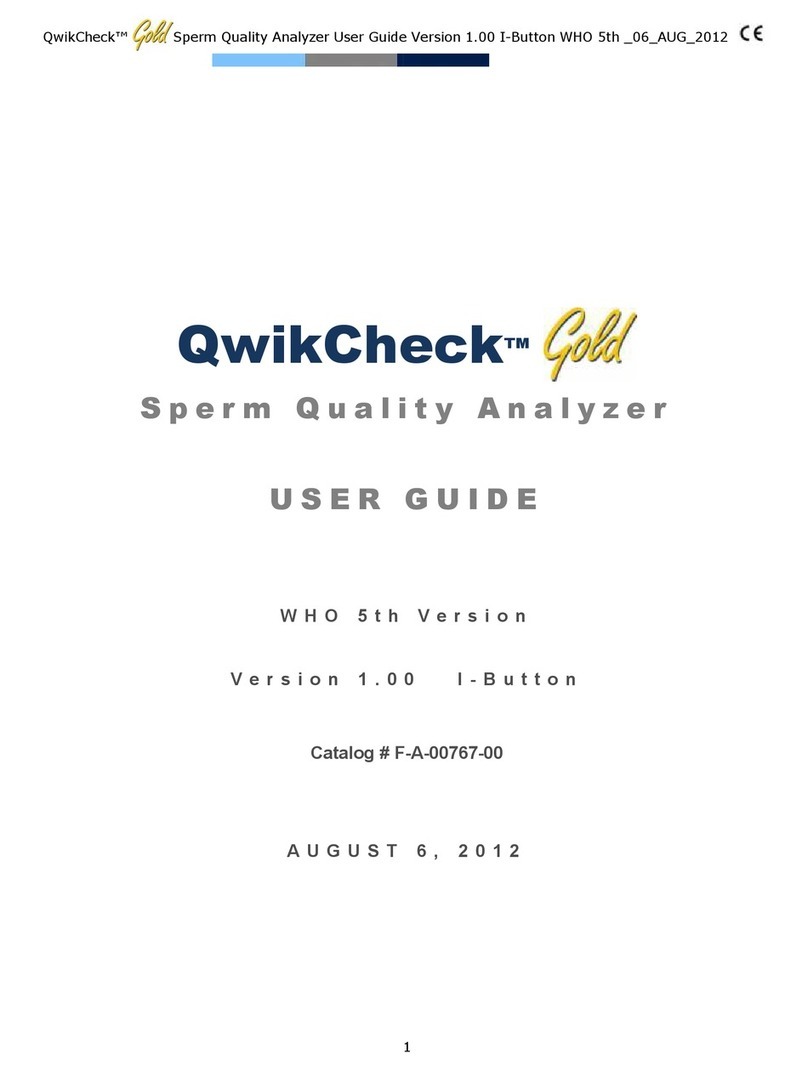
QwikCheck
QwikCheck Gold user guide
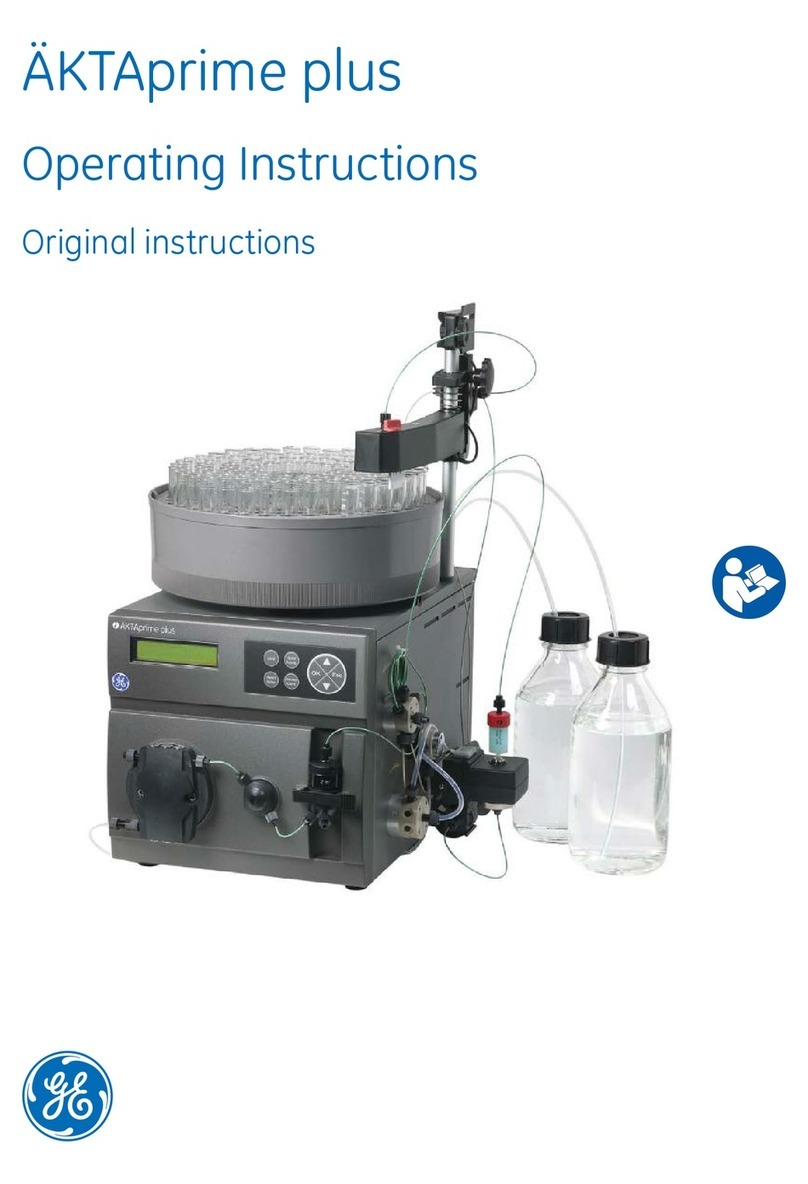
GE HEALTHCARE
GE HEALTHCARE AKTAprime plus operating instructions

Agilent Technologies
Agilent Technologies agilent 7683B Installation, operation and maintenance

bg edelstahl
bg edelstahl euroMAT light Bedpan Operating and maintenance manual

AS
AS QC2 Series operating instructions

